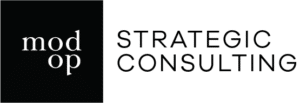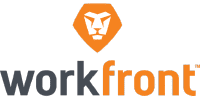Business-to-business publishers have been battling digital and market disruption now for more than two decades – with varying measures of success. The main culprit of disruption is the rise of the internet, which has forever changed how content is consumed, and which has become a platform for rapid and often unforeseen advances in data agility and marketing automation. Publishers in general have done remarkable work responding to the paradox of the internet, recognizing it simultaneously as an opportunity and a threat. And to their credit, those quick to respond have remained viable – where others have consolidated or disappeared. But as the pace of change accelerates today, many are now again struggling with their next moves and transformation options as they face a new round of challenges, and even existential decisions.
The primary headwind for B2B publishers today is that the value and services they have traditionally provided to their marketplaces have been relegated to the category of “nice to have” as opposed to “essential” by both audiences and advertisers. This commoditization of services puts pressure on growth, and margins. Consolidation and efficiencies have been already squeezed out of most publisher’s operating structures and there is little wiggle room left to drive down costs.
Audiences have shifted in a relatively short time frame from print, to desktop internet, to mobile devices for content consumption. The emerging generation of mobile users now rarely picks up a print publication, spends less time at the desktop, and most likely can’t even recall the days when dominant print B2B brands ruled their marketplaces. Driven by advanced algorithms and AI, today’s digital audiences can be simultaneously exposed to multiple and competing sources of news – where they make choices about content online from both traditional brands and new upstarts alike. The fracturing of industry news sources and the ease of entry for new content providers makes building brand loyalty with new users difficult for traditional publishers. It also makes monetizing content (or maintaining the rare paid subscriber base) though subscriptions nearly impossible. This challenge will become even more acute as the aging, most loyal, traditional media users retire completely from their industries in the next few years.
From the advertiser’s perspective – the lifeblood of B2B publishing – new marketing technology delivered through cost-effective cloud-based platforms is eclipsing the value of the audience aggregation and targeting services that were historically the cornerstone of B2B publishers. Today, publishers are primarily “feeding” their advertiser’s “marketing machines” with contacts (email lists, e-blasts, impressions, soft leads from webinars and events etc.) that are commanding, at best, commodity-like prices. Account-based marketing (ABM) has opened-up a new flank of vulnerability for publishers where marketers, on their own, can pinpoint precise companies and the personas within them that are most apt to buy their products. Slicing their audiences to this level of precision often exposes how few viable impressions the publisher really offers its advertisers. While this precision may increase a publisher’s yield per contact or impression, total spend from advertisers can drop dramatically when audiences are unbundled. Programmatic buying and ad networks are suppressing banner advertising yields, while content creation and native content has been a mixed blessing. Native content creates new value for advertisers and generates revenue, but with its proliferation each new article posted dilutes the impact and revenue yield of the tactic as a whole. Native content deployed to the extreme often confuses audiences as to the source of the content, potentially diminishing engagement with the brand – both the market-supplied and original editorial content.
A big wake-up call
While these observations may appear to portend a dire scenario for B2B publishers, I’d rather think they underscore a structural market change underway that serves as the next big wake-up call. After all, B2B publishers have been resilient, why not continue to evolve, and indeed, thrive?
Forward thinking publishers must reignite growth and pivot from commodity offerings (nice to have) to higher margin (essential to have) services, while re-asserting their “right to play” a critical role in the industries that they serve. The objective is to provide services of higher value, and higher margins, that enable their industries and the professionals within them to learn, operate, connect, and transact more effectively or efficiently. To do this, publishers must first commit to laying the groundwork for a strategy by doing the hard work necessary to discover the possibilities and gaps that exist, or will emerge, in their industry processes, professions and marketplaces. Information services, business intelligence, data and analytics, workflow tools and platform opportunities abound in most industries. Publisher have a leg up on start-ups as they already have brand recognition and access to the markets through their audiences. Prioritization on where to play, how to play (build, acquire, or partner), and determining how existing assets can be leveraged for development, implementation and launch follow opportunity discovery.
Here are six things publishers should be thinking about now to assess their current position in the market, and prepare for their pivot:
- What are your customer and prospect conversations like today and who are you talking to? Are you engaging with senior executives or are you being directed to lower level staff or buyers? When you penetrate to senior level players, what is the conversation like? Are they truly inspired with your proposals or is it a “ho hum” reaction? Chances are if you are working primarily with staff and buyers, you’re not perceived at a high enough strategic value to warrant the attention from the top. You are in the “nice to have” but not “essential” category.
- How are you currently working with large sophisticated customers versus smaller customers? Large companies tend to have the resources to work at the cutting edge. Are you embedded in their workflows and adding value? Do you know where they are headed strategically? Understanding your largest customers needs and initiatives is a great way to get a pulse on market needs and direction.
- Dissect your industry and break it out into its component parts. Most industries are a complex web of manufacturers, supply chains, and end users. Where do you fit, and where does your brand resonate? What areas of the industry are growing, slowing or changing? Understand the needs of the users within each of these component parts and break them down into personas. How do they do work? What do they need? Where are the information gaps and opportunities?
- Don’t look back, look ahead. It’s tempting to root for a comeback. Advertising services will continue to be viable, but the emphasis will be on your digital strength and acuity. Print advertising is receding as a percent of marketing spend globally and is not expected to see a turnaround.
- Re-assess how you are deploying your editorial assets. Is your staff spending most of their time on commodity-like news gathering and reporting activities? Your pivot may require an editorial shift to skills in data collection, analysis and research that supports business intelligence and analytics products and services. The objective is to identify and focus on original, unique content that can be monetized.
- Sharpen and update your platform expertise. Publishers are not known for deep in-house IT expertise and maintaining complex IT infrastructure, but the world is now being increasingly driven by flexible, on-demand cloud-hosted solutions. This has dramatically leveled the IT playing field, decreasing the cost of entry and capital outlays required to deliver digital and data services. Business strategy and execution can be implemented with a new set of internal skills geared to managing services delivered through the cloud.
Pivoting from a “nice to have” to “essential” role in the industries served will require a commitment from B2B publishers top management to think differently about how their companies operate, and how they identify opportunities and develop products and services. This new organizational “DNA” will be more agile, iterative and responsive to industry needs – and ultimately build a more competitive and more profitable business.
















